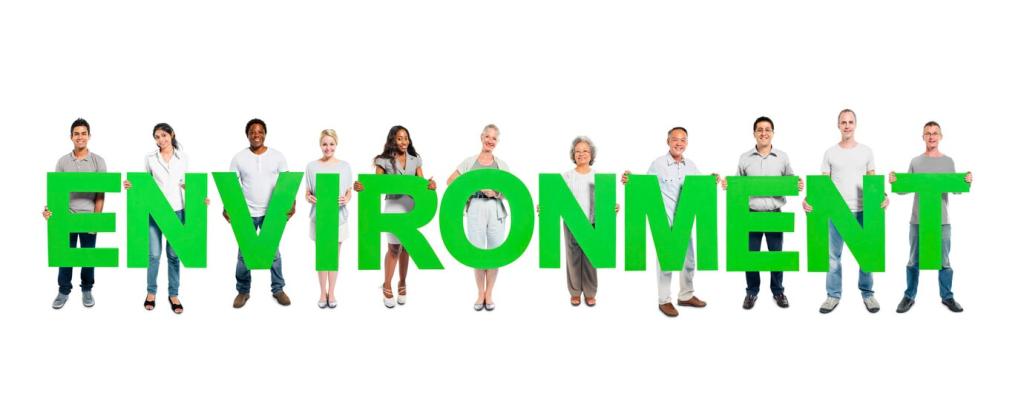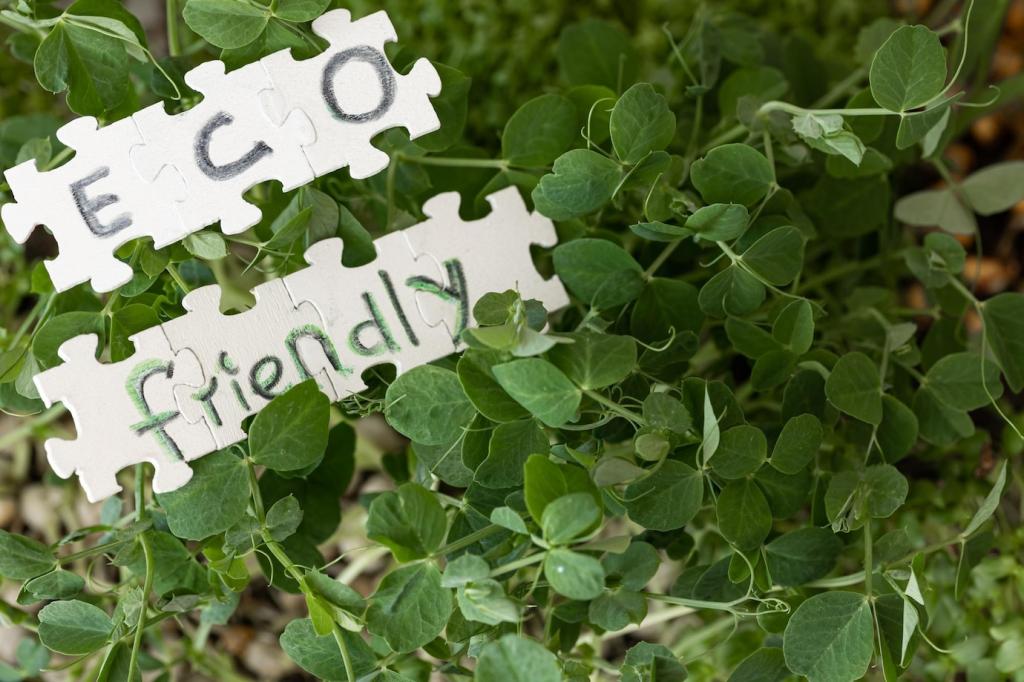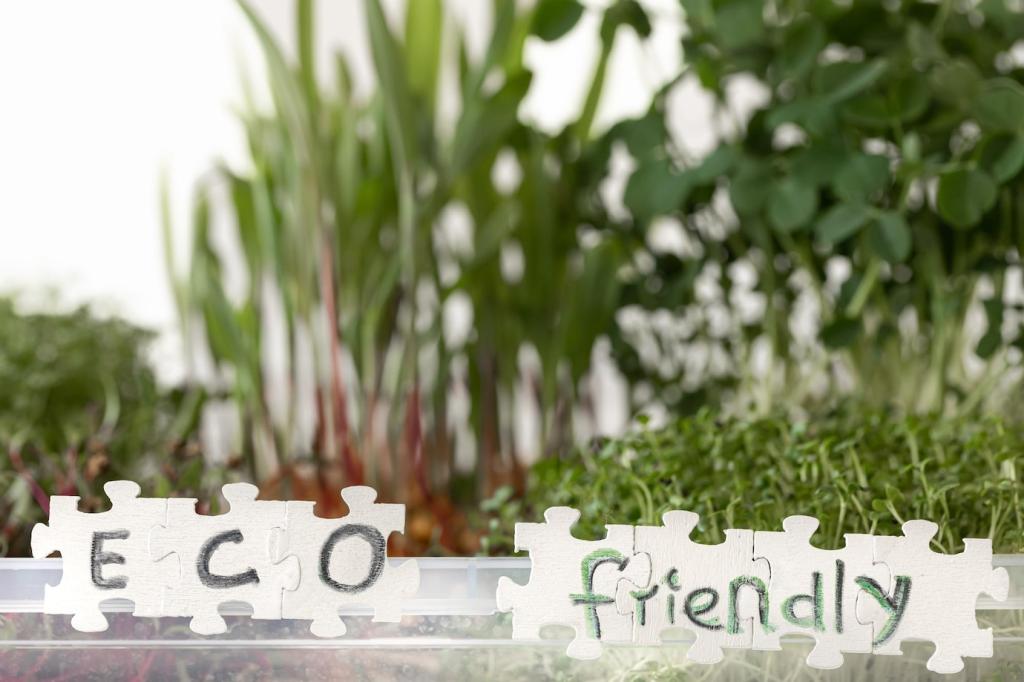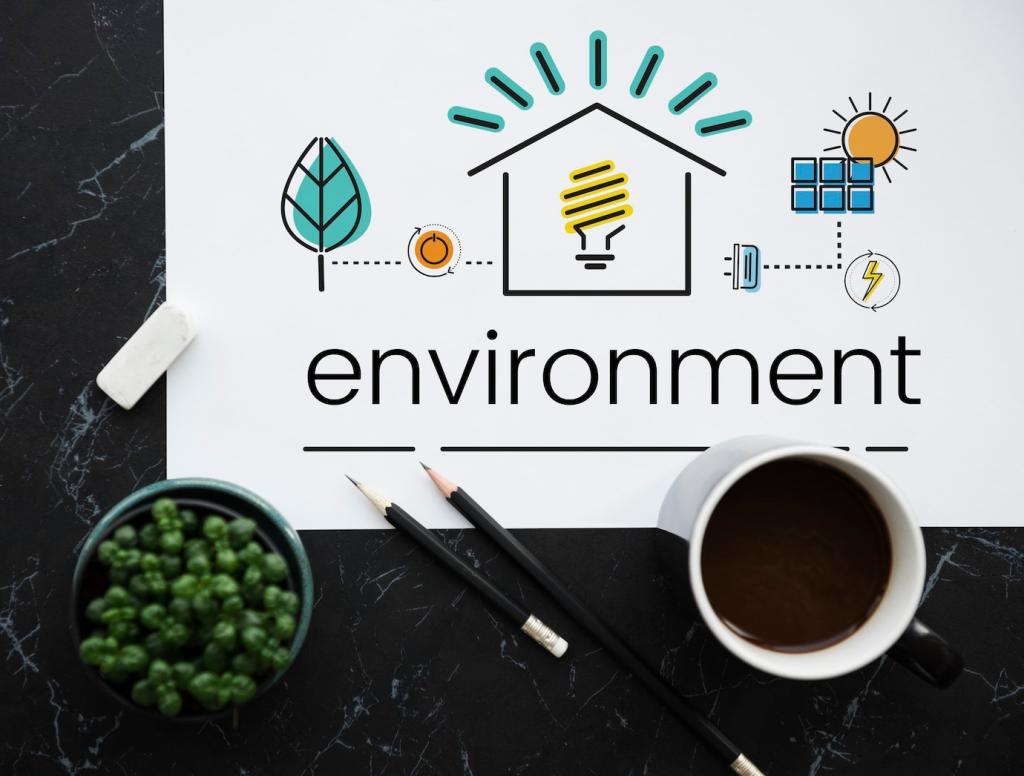Sustainability Success in Eco-Settlements
Laying the Groundwork: Principles that Make Eco-Settlements Thrive
Circularity is not a slogan; it is chore charts, compost bins, and rules about what comes through the gate. Communities reduce waste by designing loops for water, nutrients, and materials, tracking flows like librarians track books. Tell us which loop your neighborhood could close first.


Laying the Groundwork: Principles that Make Eco-Settlements Thrive
Rainwater harvesting, greywater reuse, and drought-tolerant plantings create a hydrological safety net. One coastal settlement cut municipal demand by 37% through cisterns, bioswales, and soil sponges. Would your block adopt a rain garden brigade this season? Share your ideas and we’ll amplify them.




Regenerative Food Systems: Soil, Seeds, and Shared Abundance
Composting, mulching, and cover crops turned a compacted field into a living sponge within three seasons. Soil organic matter rose from 2.1% to 4.3%, increasing water retention and yields. What’s your favorite green manure mix? Share and help others rebuild their ground.
Regenerative Food Systems: Soil, Seeds, and Shared Abundance
Hedgerows of nitrogen-fixing shrubs, fruit trees, and native flowers link gardens to wildlands, inviting pollinators and songbirds. Paths meander beneath shade in summer, and children collect windfallen pears in autumn. Tell us which tree you’d plant first for food and habitat.
Bioclimatic Architecture: Buildings that Breathe with the Land
Orientation, shading, cross-ventilation, and thermal mass establish comfort fundamentals. A courtyard cluster cut cooling loads by 45% using pergolas, vines, and night-flush ventilation. Which passive tweak helped your home most—external blinds, ceiling fans, or deciduous trees? Share your experience.

Conflict as Compost for Community Growth
Facilitated circles and restorative conversations turn friction into learning. A settlement reduced meeting time by 30% after adopting clear roles and agreements. How do you maintain psychological safety while disagreeing? Share a practice that helped your group transform tension into trust.
Learning Hubs and Skill-Sharing Pathways
Weekly workshops—from bicycle repair to mycology—build confidence and reduce consumption. Teen interns co-teach, elders mentor, and everyone leaves with a new tool in hand. Which skill would you teach or learn next? Comment to spark the next session on your block.
Affordability and Access as Design Goals
Sliding-scale dues, cooperative ownership, and sweat equity keep doors open to diverse participants. When people can afford to stay, social roots deepen. What creative housing model inspires you—community land trusts, co-ops, or co-ownership? Tell us and we’ll feature top ideas.
Measuring What Matters: Transparent Impact and Honest Learning
01
Simple Dashboards, Powerful Conversations
Monthly dashboards compare targets to reality in plain language. When water use spikes, residents investigate leaks together rather than blaming. What metric motivates you most—per capita energy, compost volume, or bird species count? Tell us and shape our next toolkit.
02
Life Cycle Thinking Beyond the Purchase
Embodied carbon, maintenance, and end-of-life plans reveal true costs. One community chose reclaimed brick over new concrete, saving emissions and money. Which product would you evaluate with a life cycle lens this week? Share your pick and we’ll crowdsource data.
03
Open Data, Open Hearts
Publishing wins and failures invites peers to improve faster. A transparent stormwater report led to neighboring towns piloting bioswales. Would you pledge to share one lesson learned this month? Comment with a headline and we’ll follow up for a feature.
From Pilot to Pattern: Policy, Finance, and Scaling Success

Community Capital and Cooperative Ownership
Member shares, green bonds, and mission-aligned lenders fund infrastructure without sacrificing values. One co-op financed solar through on-bill repayment, lowering barriers. What funding path could your community unlock next? Share strategies and we’ll compile a practical guide.

Navigating Codes with Creativity
Adaptive interpretations of existing codes often open doors. Teams arrive with data, pilot proposals, and a willingness to listen. Which regulation most blocks your vision—greywater, housing types, or mixed-use zoning? Tell us and we’ll surface model language that works.

Replication Toolkits and Peer Networks
Checklists, standard designs, and mentorship shorten the learning curve. Regional clusters share equipment, spares, and stories. Would you join a peer circle to co-develop a microgrid or garden plan? Comment “I’m in” and we’ll connect interested readers.
